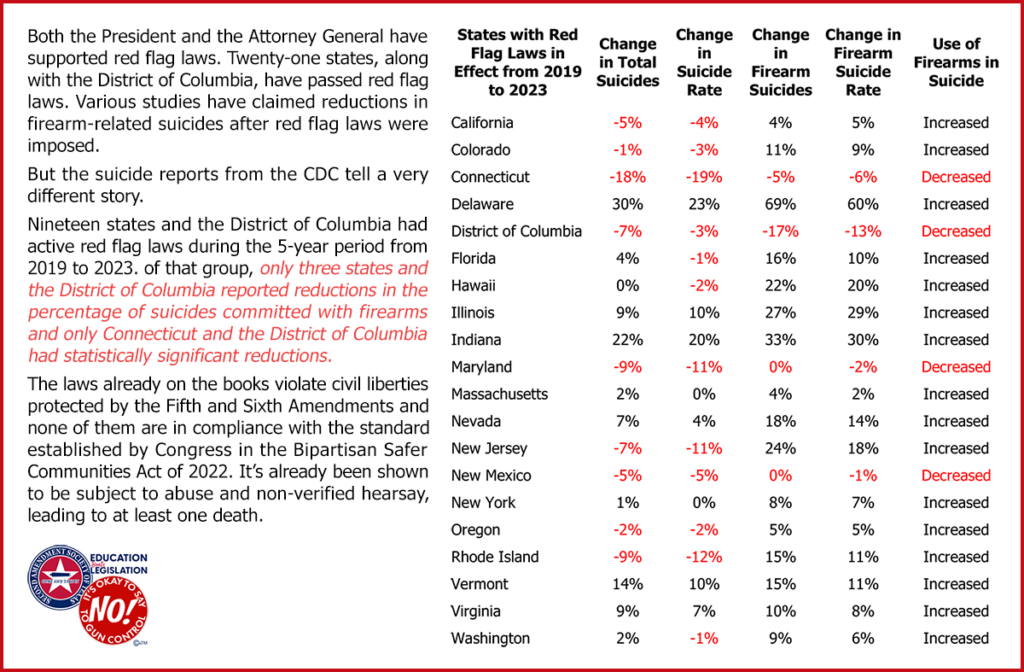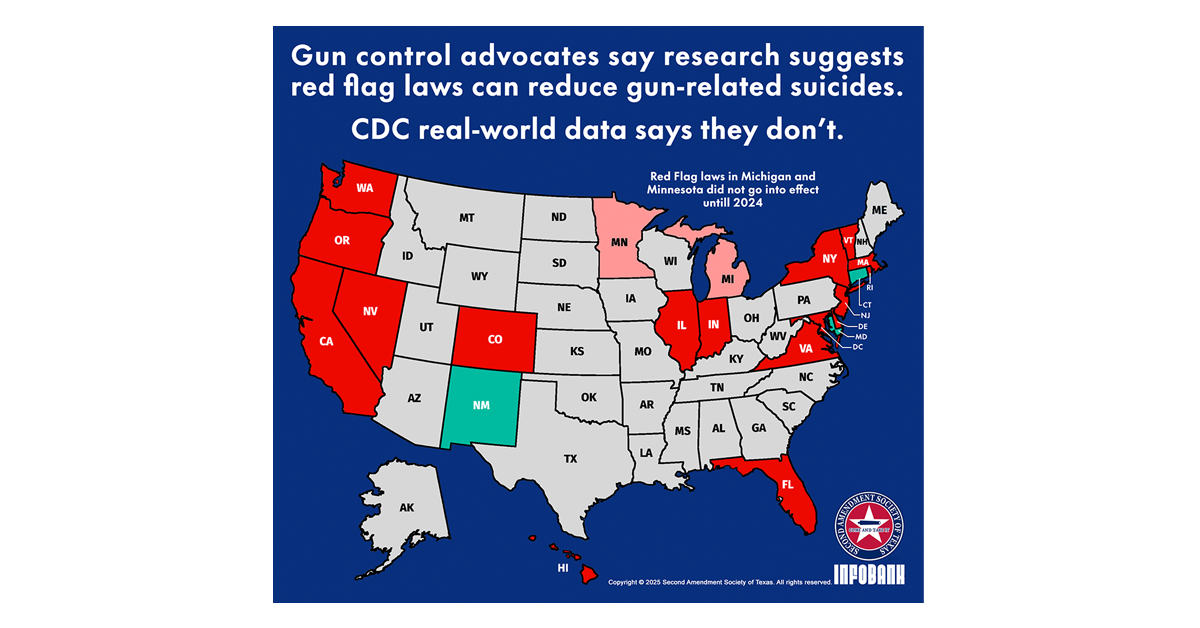Imagine the government depriving 14-16 citizens of their Second, Fifth, and Sixth Amendment rights and their property with the hope the action would avert one suicide by gunshot. There were 27,300 firearm-related suicides reported to the CDC in 2023, meaning there would need to be 382,200 government interventions – with no guarantee of success. After all, those were just estimates.
This is how gun control fans pitch red flag laws. After the Supreme Court ruled in it was okay to temporarily disarm a person posing a danger to themselves or others in Rahimi v. United States, fans of red flag laws believed the court had just come down on their side. However, this isn’t exactly true.
As they exist in the U.S. today, red flag laws do not pass constitutional muster. Unchallenged hearsay evidence, ex parte hearings excluding the person for whom the order is sought, and deprivation of liberty and property without due process of law are all serious breaches of the restraints placed on governments by the Bill of Rights and the Fourteenth Amendment.
Moreover, the current red flag laws do not even meet the standards Congress required in the Bipartisan Safer Communities Act of 2022.
On top of everything, red flag laws don’t even work. The chart below shows just how many failures red flag laws have had over a five-year period.

Outside of suicide, red flag laws have little value. If there is a credible threat of violence, law enforcement already has legal avenues for addressing it. This is especially true after the Rahimi ruling. The Parkland shooting that panicked the state legislature into passing some laws that should be repealed was the result of bad policies, inept school administrators, and multiple failures of law enforcement. Red flags only work if you wave them and get someone’s attention.

